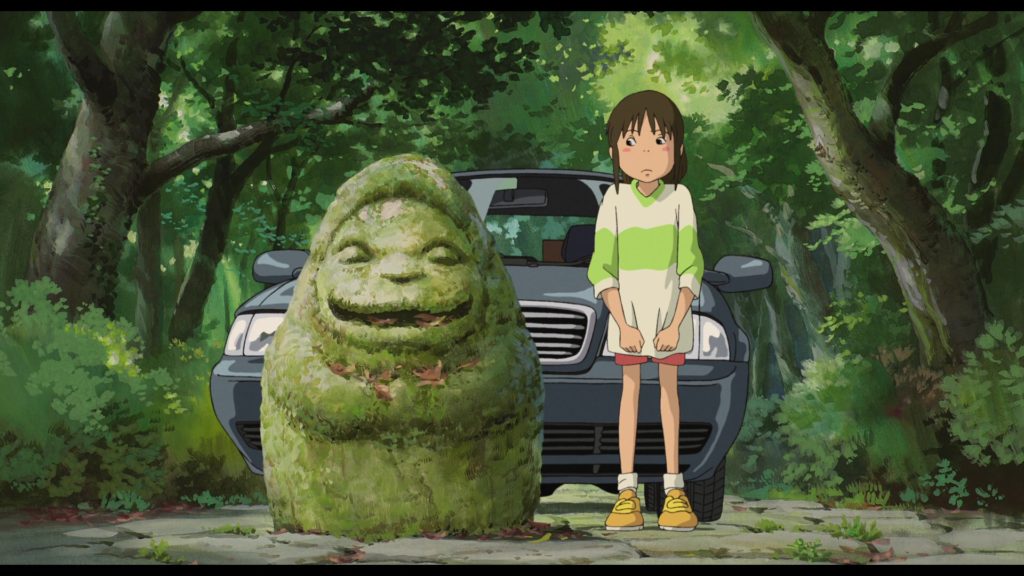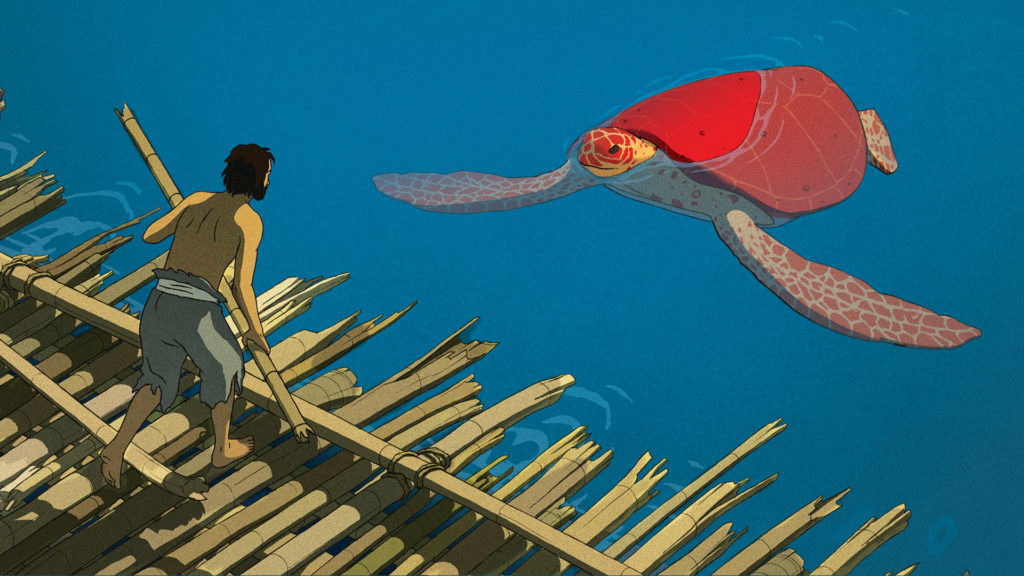- Blood of the Dragon (1971): Seen on 35mm at the Hollywood Theater, just before the reels were loaned to Quentin Tarantino. As promised, it had “some of the most interesting film damage” I had ever seen. Celluloid is a volatile material! Anyway the movie fit well within the bounds of the wuxia genre in a satisfying way, and I liked that it was directed by a woman.
- Bill & Ted’s Excellent Adventure (1989): Ian made me watch the sequel in 2002 or something, but I’d never actually seen this. What an earnest, sweet, stupid movie—so sweet, in fact, that the one random moment of requisite 20th-century homophobia jarred even more than usual. Nice to see them come correct on police violence, military recruitment and wealth inequality, though.
- Mad Max: Fury Road aka Black & Chrome (2015): Technically a rewatch, except not, as this was the monochrome version. It was also the big screen version, at the Hollywood as a Planned Parenthood benefit. Even without color, and with visible pixels, it loses no impact. I tried to take note of things like cuts and composition and depth of field, and I failed! It’s hard to observe at a remove that to which you are riveted.
-
The Red Turtle (2016): By contrast, I did a lot of observing composition (and color, and texture) in this movie, which is beautiful but I think holds itself a little apart from you. Part of that is its constraints: no dialogue, no narration, no explanations at all, like a wordless picture book. The characters don’t even have names. For me, that blunted its emotional impact as well, but it was very beautiful to watch.
They did pull out one particular and effective trick I haven’t really seen much in 2D animation. Usually, even when the 2D is all digital rather than cel painting, the “flatted” color areas are in fact flat, with maybe some highlights and shadows thrown in for depth; details are done with line work, and flatting is a separate process stage done quickly and by lower-level animators. If you see texture and detail within a colored space, it’s probably on something static like a background that only has to be drawn once. In this shot from Spirited Away (2001), Chihiro and the car were drawn by animators, where the idol and the trees were done by static painters. See the simple colors on her shirt compared to all the variation on the stone?

Instead, The Red Turtle takes advantage of its digital nature, attaching texture to everything and letting the computer do the work of keeping it consistent with movement. It’s like film grain, but you can see in this shot that it’s applied differently to various surfaces—the upper area of the turtle’s shell has less texture than the parts below the water.

They do some other fun stuff too: using the surface simulation usually applied to fabric or water in 3D animation for foliage here, for instance. There’s some cool ligne claire influence going on, and Lucy even pointed out a couple of nods to Moebius. Simple story, visual feast.
- Ball of Fire (1941): Watched on Sumana’s recommendation. Man, this was great. That is to be expected from something cowritten by Billy Wilder and directed by Howard Hawks, but Sumana gave Barbara Stanwyck top billing, and she was correct. I’d never (remembered) seeing her in a movie before, and she carries the whole thing. Also, I’m going to start wearing a sweatshirt over a button-down in homage to the avuncular German professor. Easily my favorite pro-descriptivism jazzy screwball gangster comedy to feature Snow White and the seven dwarves.
-
You Were Never Really Here (2017): My second Lynne Ramsay movie, after a fifteen-year time jump in her career. I feel like if you have heard of this movie then you know it features a lot of violence, including violence against children, sexual and otherwise. It’s hard to put that in a genre story in the 21st century without seeming exploitative yourself, and I don’t know if this movie entirely avoids that.
All that said, holy fucking shit, I understand better why people are so reverent about Ramsay now. Fleet without skimming, enigmatic without distancing, clever but not ostentatious, observant but not voyeuristic—or at least not catering to the voyeur in all the expected ways. The crew’s stylistic watchphrase was apparently “heavy camera,” and the implications there are carried through.
Ramsay does this thing in common with Alexander Mackendrick that I might have mentioned before. This movie had sequences where a moving subject is obscured for most if not all of the shot, but I never felt confused or lost because my eye was guided along their path. I haven’t quite parsed it out yet, but I think it might be something like this: you catch the subject at the start of the shot at a rule-of-thirds line, as the point of focus, entering with movement; you keep the camera centered and focused on them as they move into obscurity, through a crowd of people or behind traffic; and you catch them out of it on the other side, at the opposite screen-third focal point, emerging into perfect focus and giving the audience a pleasing “aha” of facial recognition. You can convey depth of field, parallax, atmosphere, tension, and action all at once in a simple shot, but it only works if you have the technique really nailed down. Eventually I will find some clips that demonstrate what I’m talking about and then come back and compare them to see if this theory holds up.